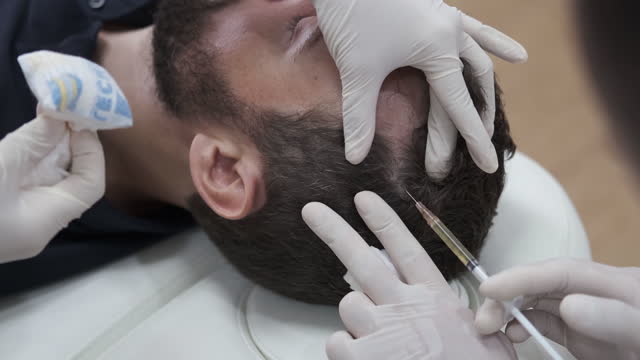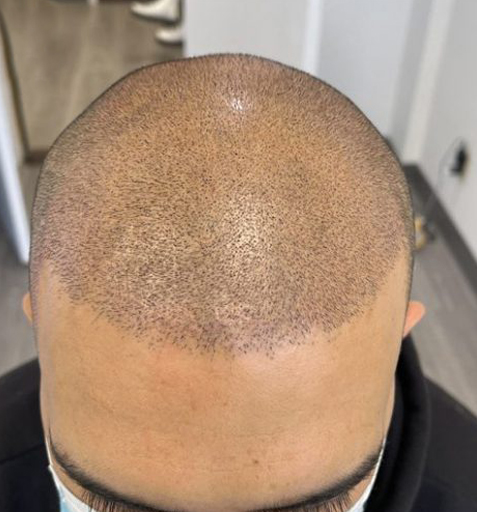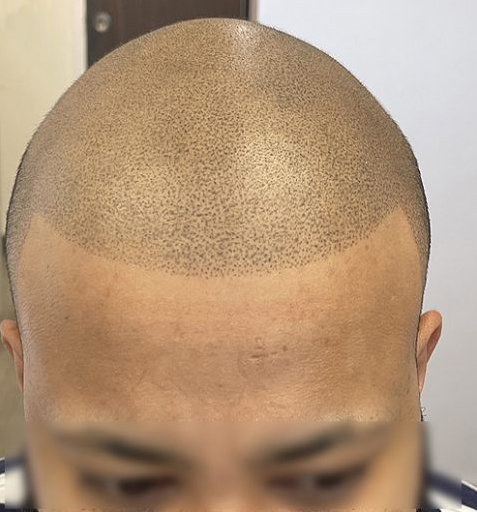
Table of Contents
Table of Contents
Hair loss can feel like a tough pill to swallow, and you’re not alone if you notice thinning strands or bald patches. It’s normal to feel a little overwhelmed, whether it’s creeping in slowly or happening all at once. But don’t worry – plenty of options are out there to help you tackle it head-on.
This guide will explain the most common causes and treatments, so you can make the right decision for you.
A lot of us inherit our hair from our family – that’s just the way it goes. If your parents or grandparents dealt with thinning hair, chances are you might too. This is called androgenetic alopecia, the most common reason for hair loss, and it can affect both men and women.
In men, hair loss often starts with a receding hairline or thinning at the crown. Women usually notice a more diffuse thinning across the scalp. While you can’t change your genetics, there are things you can do to slow it down. Treatments like medication and small lifestyle changes can help keep things in check, and understanding your family history can guide you toward the best treatment options.
If you’re dealing with hormonal shifts, you’re not alone. Women, in particular, experience hair loss related to things like pregnancy, childbirth, menopause, or hormonal imbalances like polycystic ovary syndrome (PCOS). Thyroid issues can also play a big role. Both an overactive or underactive thyroid can cause thinning hair.
The good news is that hair loss related to hormones is often temporary. Once the hormonal imbalance is addressed, hair growth can resume. So, if you think hormones might be the culprit, it’s a good idea to talk to your doctor.
Certain medical conditions can affect your hair, too. Autoimmune disorders like alopecia areata cause the immune system to attack hair follicles, leading to bald patches. Infections, like ringworm on the scalp, can also lead to hair loss. Other chronic conditions like diabetes or anaemia can interfere with the body’s ability to nourish hair follicles, causing thinning.
If your hair loss is tied to a medical condition, treating that condition might be your best shot at getting your hair back. Working closely with your doctor will help you manage both your health and your hair.
Believe it or not, your lifestyle plays a huge role in your hair’s health. Stress, for example, is one of the leading causes of hair shedding. High-stress levels can push your hair follicles into a resting phase, which leads to more hair loss.
Diet is another big factor. A poor diet, especially one that lacks essential vitamins and minerals, can weaken your hair follicles and contribute to thinning hair. Eating a balanced diet rich in iron, protein, and vitamins can promote healthier hair growth. And don’t forget about habits like smoking or excessive use of heat styling tools – these can damage your hair over time.
Over-the-counter products like Minoxidil are worth considering if you’re looking for an easy, affordable option to fight hair loss. Minoxidil is one of the most popular treatments and works by improving blood flow to your hair follicles.
However, consistency is key. You’ll need to apply it daily to areas with thinning hair, and the results can take time, usually several months. But stick with it, and you could see some impressive results.
For a more powerful solution, prescription medications like Finasteride are often recommended. Finasteride works by blocking the hormones that cause hair loss in men. For women, doctors may suggest other medications tailored to their specific hormonal imbalances.
Before starting any medication, it’s important to consult with a healthcare professional, as some treatments can come with side effects. Your doctor can guide you on the safest, most effective option for your situation.
PRP (Platelet-Rich Plasma) therapy is a non-surgical option that uses your blood to encourage hair growth. Doctors extract platelets from your blood and inject them into your scalp to boost hair follicle health.
Another option is low-level laser therapy. This method uses light to improve blood circulation to your scalp and stimulate dormant hair follicles. It’s an easy, non-invasive treatment, but you’ll need regular sessions for the best results.
If you’re dealing with severe hair loss, hair transplants might be the solution. This involves moving healthy hair follicles from one part of your scalp to another. Two common methods are FUE (Follicular Unit Extraction) and FUT (Follicular Unit Transplantation).
While hair transplants are more expensive than other treatments, they provide permanent results. Though recovery takes time, once the transplanted hair heals, it will grow just like your natural hair.
Choosing the best treatment starts with expert advice. A consultation with a specialist at a reputable hair loss clinic can help you figure out what’s causing your hair loss and what treatments will work best for you. Take the time to ask about your options and get professional advice on how to proceed.
It’s also important to think about your budget. Treatments vary in cost, so having a clear understanding of what you can afford will help you make the best decision. Consider how each treatment fits into your daily routine too—what’s most manageable for you?
Hair loss doesn’t have to mean the end of feeling confident in your appearance. Understanding the root cause of your hair loss and finding the right treatment for you is key to getting your hair back on track. Whether it’s medications, non-surgical options, or hair transplants, there are plenty of ways to restore your hair and boost your confidence.
Don’t let hair loss affect your confidence. Contact us today for a consultation and let our expert team help you find the right solution to restore your hair and improve your quality of life.






© 2024 HAIRTATTOO.CA | Scalp Micropigmentation & Trichology Centre
